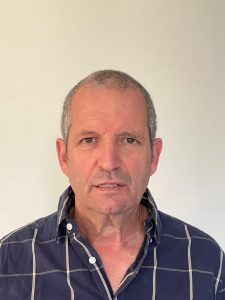Migraines affect about 12% of the global population, with women suffering from them three times more often than men. Beyond the severe pain, migraines also have economic and social consequences: around 157 million workdays are lost each year, making migraines one of the most common causes of disability. For some patients, an attack is not just a throbbing headache but a debilitating experience, accompanied by extreme sensitivity to stimuli and sometimes nausea and visual disturbances. Below is information on treatment during migraine attacks.
The endless cycle of migraine attacks
Migraines may develop in four main stages, although not all sufferers experience each one. The prodrome stage can appear up to 48 hours before an attack and includes early symptoms such as fatigue, mood changes, and increased appetite. About a quarter of patients experience the aura stage, characterized by temporary visual or neurological disturbances. Next comes the pain phase—typically one-sided and throbbing—lasting between 4 and 72 hours. Finally, the postdrome stage leaves a “neurological hangover” with fatigue and difficulty concentrating.
It is important to know that attacks can be triggered by many factors: hormonal changes, emotional stress, lack of sleep, foods such as aged cheese or red wine, and even weather changes. The greatest challenge is the unpredictability of the next attack—when even the fear of it becomes an aggravating factor in itself.
Limitations of traditional migraine treatment
The classic medical approach to migraines includes acute medications to stop attacks (such as triptans) and preventive medications to reduce frequency. While these treatments can be effective, they are often accompanied by side effects such as fatigue, nausea, and dizziness, and in rare cases cardiovascular complications. Frequent use of painkillers may even worsen the problem and cause medication-overuse headaches. In addition, about one-third of patients do not respond well to current treatments, and pregnant or breastfeeding women are restricted from using most medications.
An Israeli breakthrough: the 4Gates system
Israeli engineers and physicians developed the 4Gates system, based on established neurophysiological principles. The device applies measured pressure to four main acupressure points—LI4 on the hands and LV3 on the feet—using a sophisticated algorithm that mimics the work of a therapist but in a more consistent and uniform manner.
The technology is rooted in the Gate Control Theory, which suggests that continuous stimulation of the nervous system reduces the transmission of pain signals to the brain. In addition, it activates natural regulatory mechanisms: releasing endorphins and dopamine and stimulating vagus nerve activity, which contributes to relaxation and nervous system balance.
Advantages of the system for migraine attack treatment
The system—designed for treating migraines during pregnancy and in general—is manufactured in Israel in compliance with strict European CE standards. It enables self-treatment at home, without the need for special training, without side effects, and without the risks of treatment dependency. It can be used both as a preventive measure in daily life and during acute attacks for relief. Many users report improvement within minutes, and about 70% note a significant reduction in the frequency of attacks with regular use. Another major advantage: the device is suitable for all ages and can even be used during pregnancy and breastfeeding, unlike many other treatments.
Seamless integration into daily life
The system is designed to fit real life: it can be used during work at a computer, while reading a book, or while relaxing in front of the TV. Thanks to its compact design, the system is also suitable for people on the go—easily pulled out of a bag and ready for use anywhere, anytime. For those restricted in medication use or seeking to reduce it, it provides a natural, accessible alternative that allows for daily control of pain.
The 4Gates system represents a breakthrough in coping with migraine with aura—a natural treatment based on proven scientific principles that restores control to patients’ daily lives and offers new hope to millions of sufferers worldwide.

